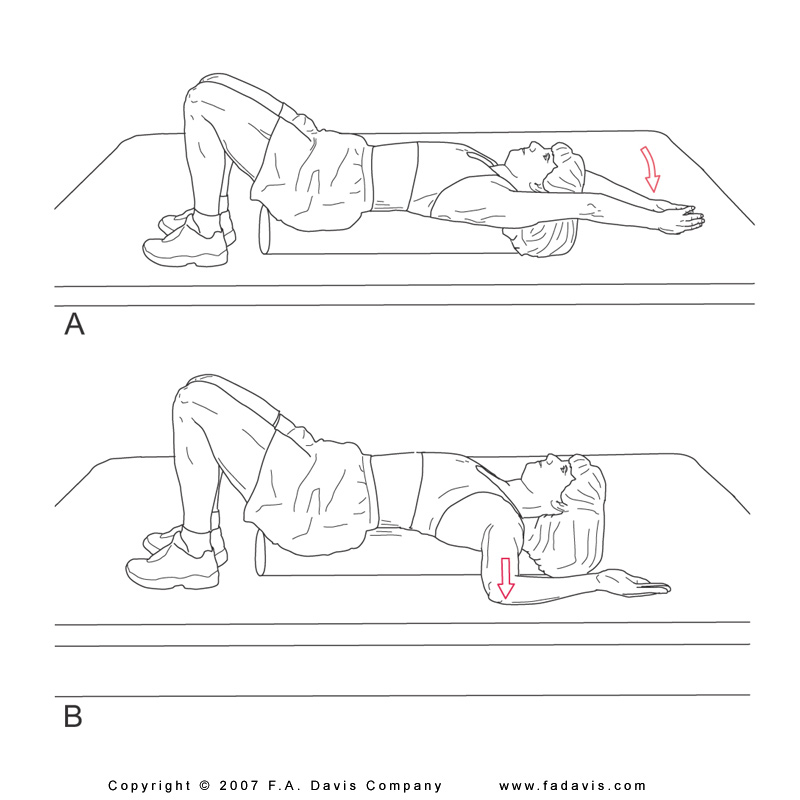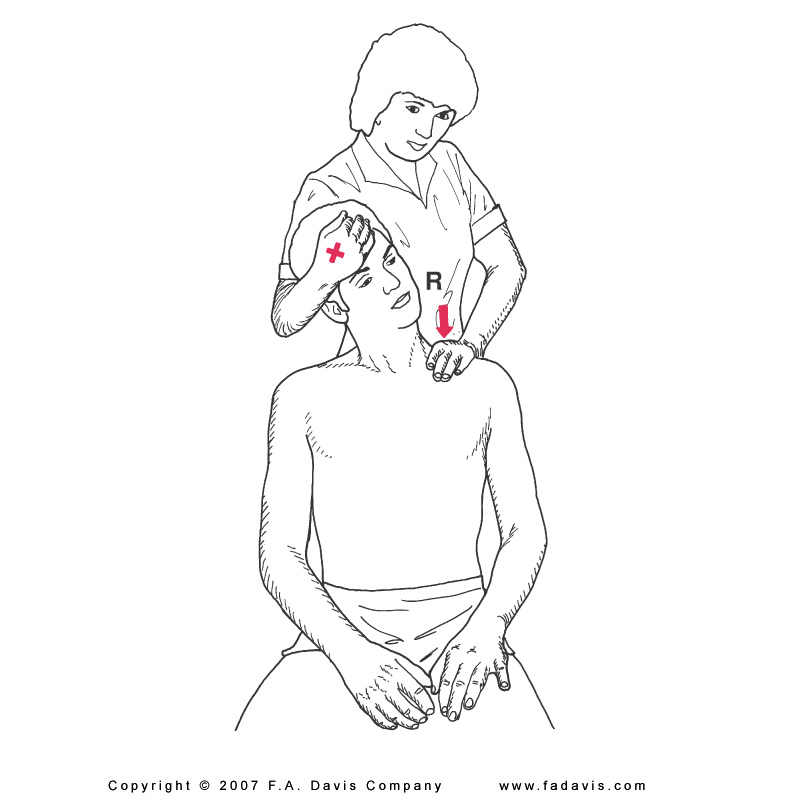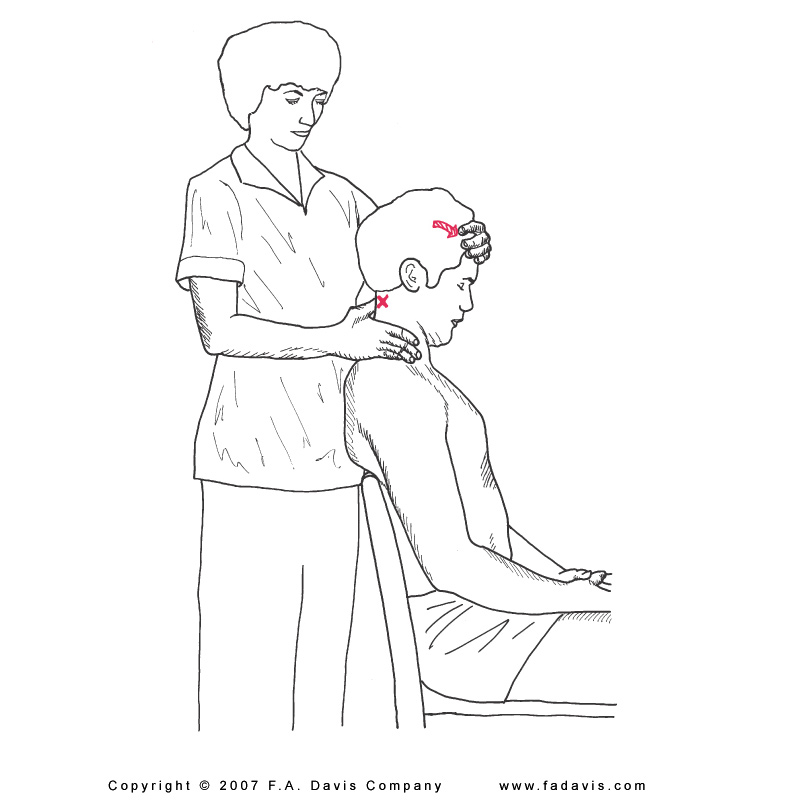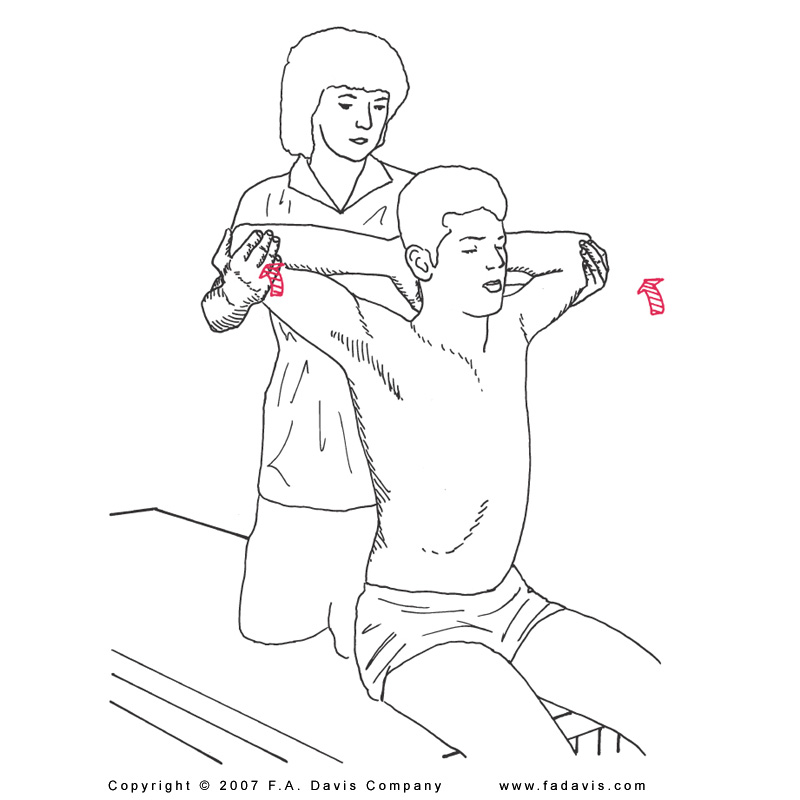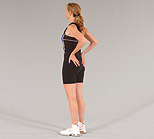Cervical and Upper Thoracic Region - Stretching Techniques
The procedures to position patients and perform spinal stretches are described in detail in Chapter 16 of Kisner and Colby. We have added some additional clinical considerations when selecting the stretching exercise. We recommend that you trial and experience each of the stretches listed in order to reinforce your understanding of the procedures and the intended effect on targeted tissues/structures.
Techniques to increase thoracic extension
Techniques to increase axial extension
In your text, the authors describe a self-stretch in standing. Try a self-stretch while sitting in a chair. Reach down for the underside of the chair and hold. This will stabilize the distal end and prevent scapular elevation or side bending compensation during stretching
Techniques to increase upper cervical flexion
Review the procedures outlined on p. 445-446 in K & C. Recall from kinesiology that cervical flexion is a primary function of the OA joint. By integrating eye motions into the assisted stretching activity, you can use principles of contract-relax and increase patient awareness of how eye position and eye gaze influencse cervical ROM.
Techniques to increase scapular and humeral muscle flexibility
Forward head posture is largely driven by muscle imbalances. Think of the number of activities in a day which require the arms to be held in front of the trunk. Think of the amount of hours spent sitting and typing, reading, etc. Lengthening of posterior structures from postural habits or lack of use can lead to a resultant shortening in the anterior trunk.
Traction as a stretching technique
Manual traction is described and illustrated on p. 446 in K&C and is also depicted in your Review for Traction Skill Check resource in PTA 104L.
Cervical traction can be provided positionally. The image below illustrates passive positioning of the cervical spine in their bias position. A therapist can educate the patient on the use of pillows or towel rolls and positions of relief through applied kinesiology in the spine.
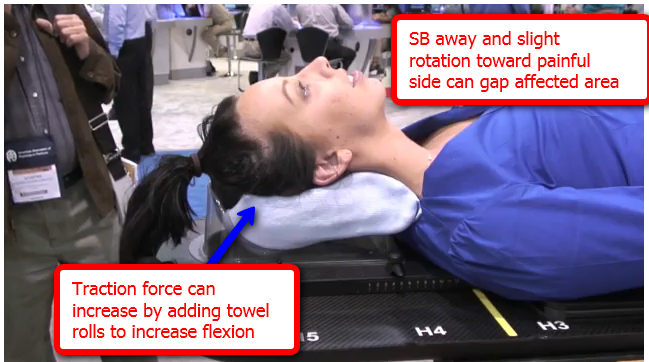
Self-cervical traction can be performed with the patient in sitting. Patients can either assume upright sitting or sitting in slight flexion with elbows on knees and pulling on the occiput (through laced fingers) in a cephalad direction.
Other Techniques to Increase Mobility
Contract relax approaches can be used effectively in the spine to decrease muscle guarding through reflexive inhibition

